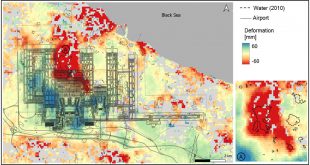FRESENIUS ENVIRONMENTAL BULLETIN, cilt.26, sa.1, ss.352-359, 2017
Satellite-Based Temporal Assessment Of A Dried Lake: Case Study Of Akgol Wetland
DERVISOGLU A. , Musaoğlu N. , Tanik A. G. , Şeker D. Z. , Kaya Ş.
Abstract: Wetlands are well-known with their rich biological diversity and economic value beyond their significant functions like serving as nesting and breeding areas for the migrating birds and maintaining partial treatment of wastewater. Turkey, as a signatory of the Ramsar Convention, has committed to protect its valuable and numerous wetlands and to utilize them more rationally. Akgol Wetland is located within the borders of Konya Watershed of Turkey. Three dams which have been put into operation in 1958, 1984 and 1988, respectively have cut the water flow to Akgol with time, and furthermore, decreased the water levels in the reeds and wetlands causing the reduction of living species in the area. The total surface area of Akgol till 1960’s had been around 21.500 ha, until now most of this amount had been lost basically due to water cuts and due to other human-induced activities like fight against malaria disease. The area has been declared as Class1 Natural Protection Area in 1992 and as a Nature Reserve Area in 1995. In this study, the land-use changes that had occurred in the Akgol Wetland and its surrounding area along years are analysed through classifying the LANDSAT images of 1987 and 2015. The results indicate that the total water surface of Akgol has declined by 93.4% resulting in only 360 ha in a period of 28 years. This specific study and the methodology developed herein will form a basis for similar other wetlands in the world that suffer from water losses due to a variety of human activities. It is an important and a common issue to provide numerical and precise land-use changes within time to decision makers that will further be responsible of rehabilitation efforts in such vulnerable areas.

 CSCRS İTÜ – Center for Satellite Communications and Remote Sensing
CSCRS İTÜ – Center for Satellite Communications and Remote Sensing 